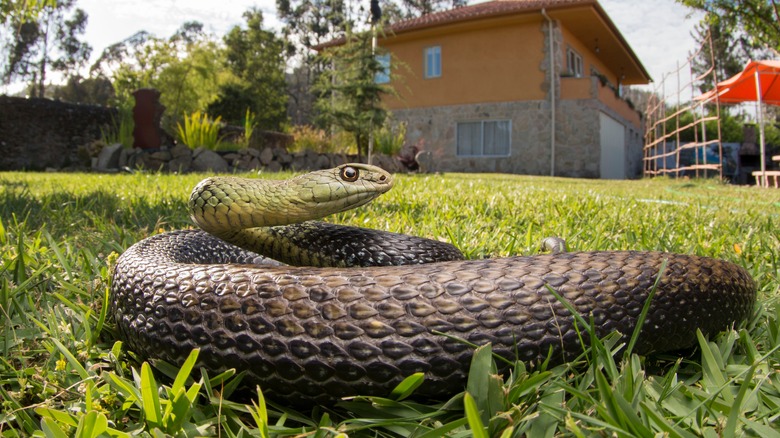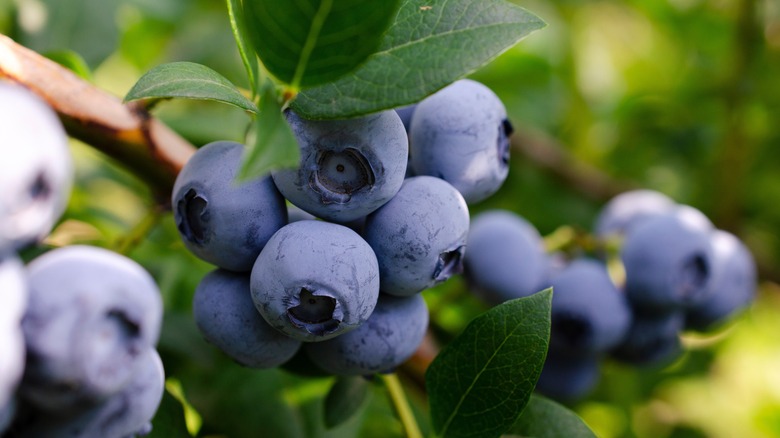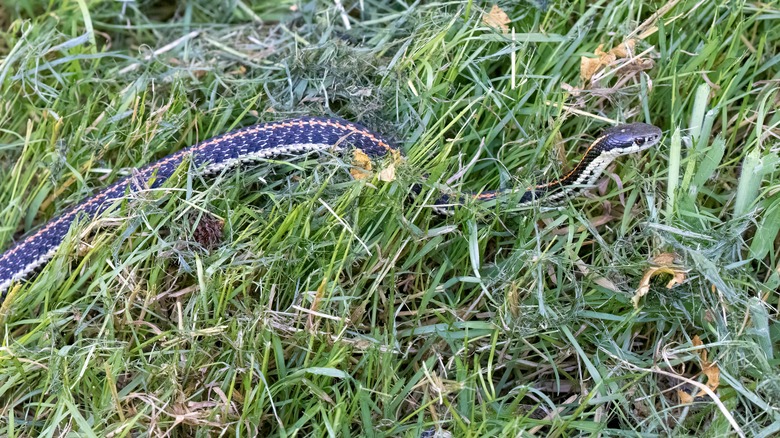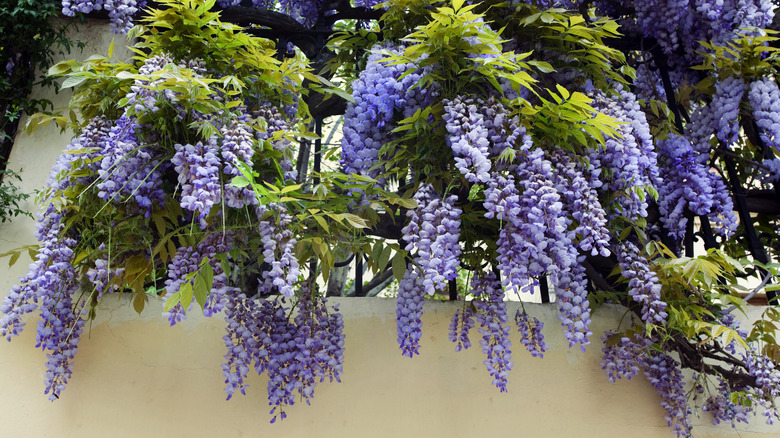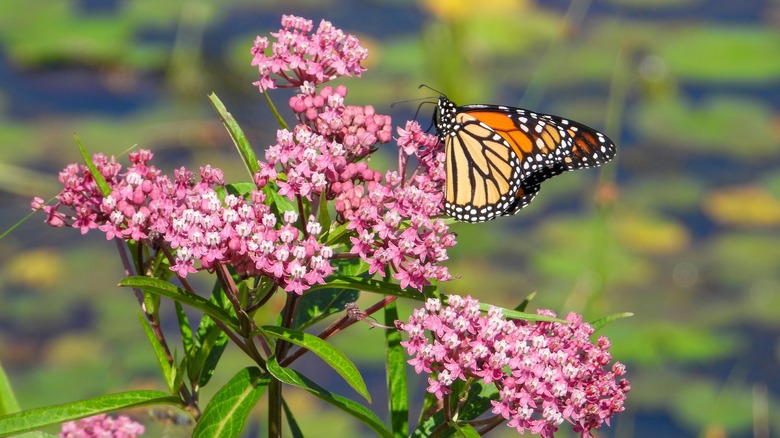Plants In Your Garden That Could Be Attracting Unwanted Snakes
When planting and maintaining a garden, you know that some of the work goes beyond the scope of the plants. Part of a gardener's job also entails keeping unwanted pests out, including snakes. While snakes are an important part of the ecosystem, venomous varieties can be quite dangerous to pets and humans who may accidentally come into contact with them.
While the common garter snakes you may encounter in your garden you may encounter in your garden and yard are generally not dangerous to humans, you may still not want to risk attracting other, more dangerous snake species. You can try snake-repelling techniques such as trimming surrounding trees or avoiding leaving bird seed and pet food outdoors. On top of these tricks, you may also need to determine whether some of your plants might be contributing to the problem. In fact, snakes may be attracted to your yard to access certain plants for a variety of reasons, including food and shelter.
Certain fruit trees can lead to more snakes in your yard
Planting certain trees can eventually offer fresh fruit for you and your family right from your own yard. However, it's important to know that other critters might enjoy fruit from these trees, too, and that the trees may even indirectly attract snakes. While these reptiles don't directly eat the fruit, they tend to feast on some of the herbivores that like fruit trees. These include rodents, such as mice and rats. Not only do such rodents eat the fruits, but they also like to hide among the branches of these trees.
While you don't necessarily have to avoid planting fruit trees in your yard, you can make some modifications to help deter rodents and the snakes that inevitably follow them. First, know that rodents favor certain types of fruit trees over others — favorites include citrus and fig trees, while peach, apple, and plum trees are less appealing. When in doubt, consider the sugar content of the fruit — the sweeter and larger the produce is, the more rodents and subsequent snakes that will likely follow. You may also use metal tree guards to help prevent rats and mice from climbing up their trunks. Also, as with any fruit-bearing tree, be sure to pick up fallen or rotted fruits from the ground immediately to prevent attracting rodents.
Small fruit plants can also attract food sources for snakes
While rodents tend to favor sweeter and larger fruit trees, they may also sometimes eat fruits from smaller plants. These include berries, such as those from raspberries and blackberries. The presence of their prey around small fruit plants can attract snakes, as well can provide ample places to hide in fully-grown berry bushes.
As with large citrus trees, you can help manage the rodent population in your garden and subsequent snakes by picking up fallen fruit and getting rid of rotten berries from bushes. Keep larger berry bushes trimmed so snakes are less likely to hide among them, and be sure to check for hidden reptiles before you pick berries. Use small rocks, such as river rocks, instead of mulch and pine straw in your garden, as the latter can also create good hiding spots for snakes. You may also consider using rodent-repelling scents around these plants to help deter them.
Snakes favor tall grassy plants
Not only do snakes like to hang out in areas where food may easily come to them, but they also favor good hiding spaces. In fact, it's common for these reptiles to reside among tall grasses as they hide from hawks, owls, and other predators. Buffalo grasses and cattails are two examples of specific types of taller grasses that may be attracting snakes in your yard. These are perfect hiding spots from predators and inclement weather, as well as for sneaky attacks against rodents and other prey snakes might hunt.
If you're finding these reptiles around your garden, consider whether there are any grass-like plants you can remove. You may also swap these out for lemongrass, which is a tall plant that snakes purportedly avoid due to its strong aroma and barrier-like qualities — another method to deter snakes is through regular lawn maintenance. Snakes are less likely to slither through short grass because it exposes them to both predators and prey.
Snakes also like to hide among vines and creepers
Aside from long grasses, certain vines and creepers also provide excellent hiding places for snakes. Common examples include ivy and wisteria. These types of plants not only help snakes hide from predators, but they can also help tree snakes hunt for prey. Furthermore, these plants may help snakes move vertically and quickly if they need to get away from a large bird or other predator. Another problem with wisteria is the low-hanging branches that can make it easy for snakes to access different parts of your garden or yard.
If you have a snake problem, first consider keeping vines and creepers trimmed. Keeping at least 24 to 36 inches of space underneath trees will help make it more difficult for snakes to stay hidden from predators and prey. Another option is to avoid planting wisteria and other similar types of plants near your garden altogether, which may be particularly helpful if you aren't able to prune fast-growing vines on a regular basis.
Milkweed may attract pollinators and snakes to your garden
Milkweed is popular among butterfly enthusiasts, as it's known to draw these pollinators to gardens and yards. If you have these in your garden, you may know that some of the most common mistakes when growing milkweed include over-watering them in the early spring months. And, while you may also already know that milkweed can draw several types of plant-killing beetles, there may be other creatures that are attracted to these flowering perennials. This includes unwanted snakes and other wildlife, such as birds and frogs. It's thought that these creatures may not necessarily be attracted to the milkweed flowers per se but are instead interested in the variety of insects that inhabit these plants. In particular, grass snakes reportedly love to climb milkweed branches, where they may eat a variety of bugs and grasshoppers.
If you do notice unwanted snakes in your milkweed plants, consider placing other plants around these perennials that snakes do not like. Some natural snake-repelling plant options include marigolds, lavender, eucalyptus, daffodils, and herbs such as basil and rosemary. Fragrances from these may deter snakes directly, while others may repel rodents and insects these reptiles eat.

